The Pacu Bead
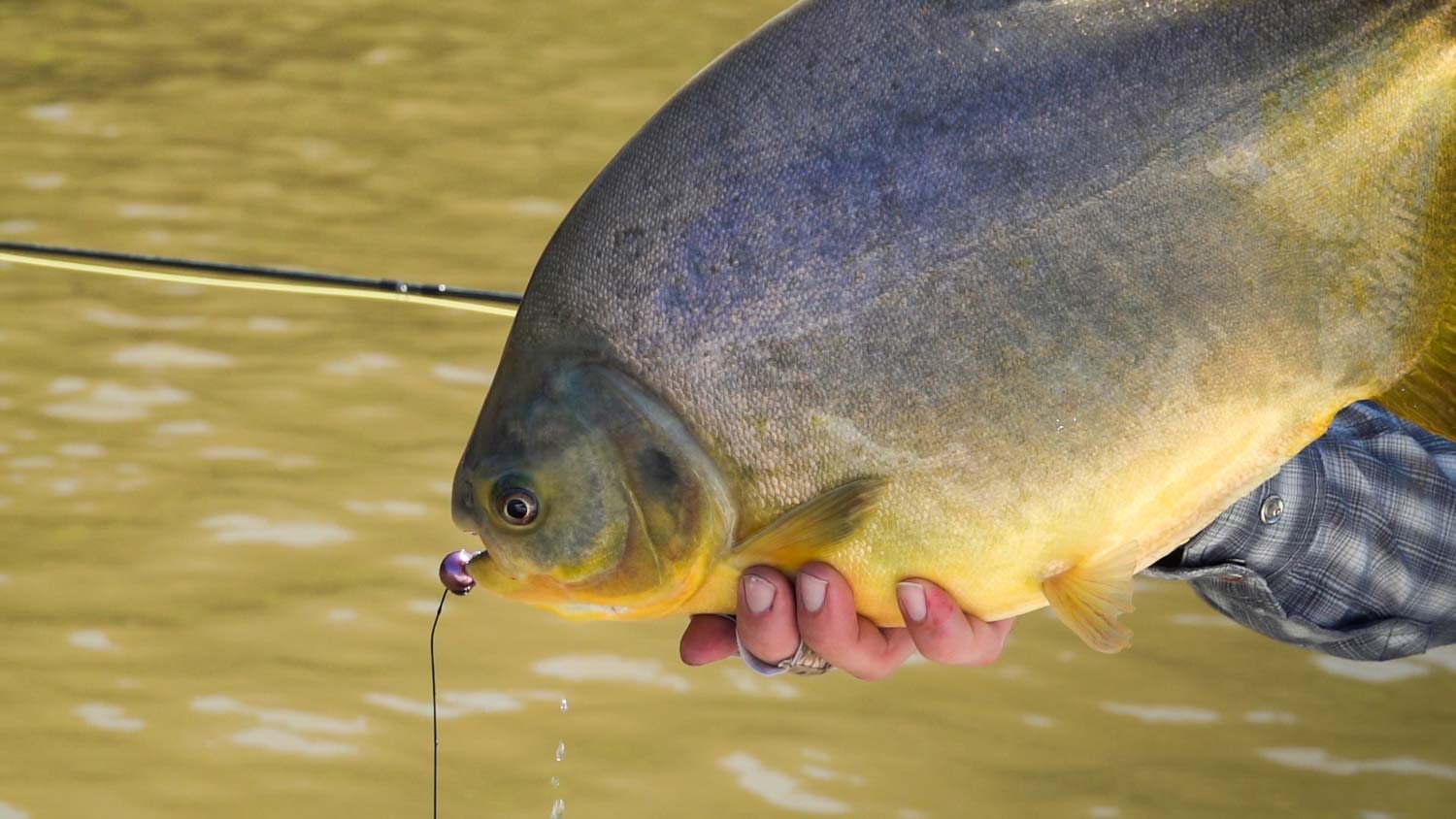
By Louis Cahill
If you are a dry-fly purest, you might want to sit this one out.
Bead fishing in the jungles of Argentina is about as far from fishing a dry fly as you could imagine. It’s not much closer to Alaska bead fishing. It’s one of the most unorthodox and effective methods I’ve ever used to catch a fish. It’s also incredibly fun!
We travel to the jungle for golden dorado, but like many predatory fish, the dorado takes a long siesta during the middle of the day. Rather than pound the water pointlessly, we’ll take a couple of hours to catch some of the exotic species found in these rivers.
The most popular is the pacu. These brawny fish are shaped like trashcan lids and put up a serious fight. They are sometimes called freshwater permit, mostly for their shape, but they are also picky eaters. They are omnivores but one of their chief food sources is actually fruit and nuts that fall from trees lining the river. They have teeth like a human for chewing these tough terrestrials.
So how to you target a fish that eats nuts?
Well, not by wading, I can tell you that! (Sorry, that was too much to resist.) Seriously though, the Argentine guides have developed an ingenious way to imitate this unusual food source. They fish giant beads from the craft store. Beads up to three-quarters of an inch in diameter. They taper the hole on one side of the bead with a
Read More »Choose Fly Color Based on the Flat You’re Fishing
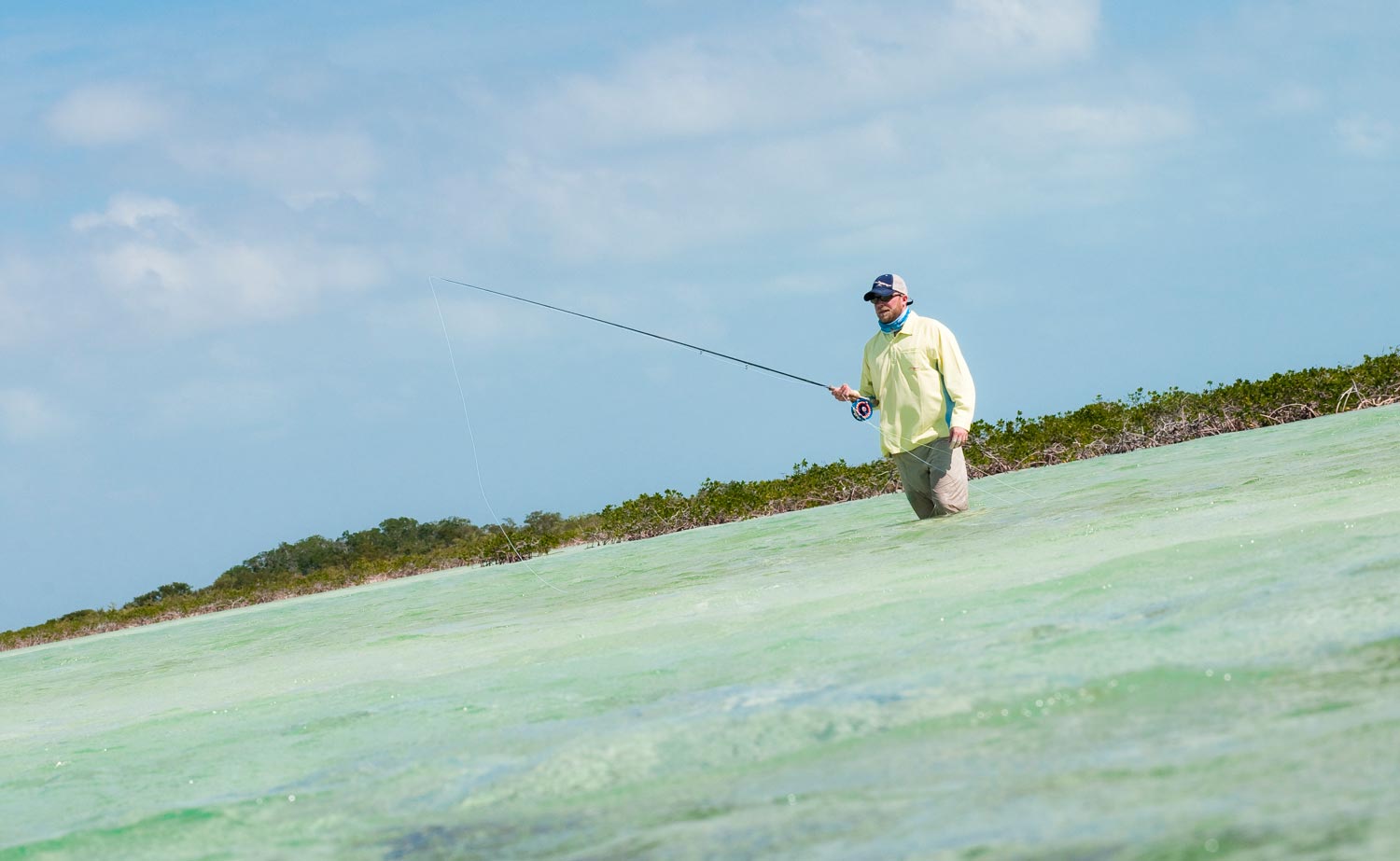
I’ve always thought in the broad scope of things that trout fishing calls for more complex decision making over saltwater fly fishing in terms of what goes into choosing the fly patterns we fish. I think a lot of that comes from the simple fact that conditions can change on an hourly basis on our trout streams and also that there’s hundreds of species of aquatic insects found on many of the trout waters we fly fish. However, the more I fly fish in the saltwater, the more I’ve come to understand how inaccurate this past notion of mine is. In many cases, fly pattern choice is just as important in saltwater fishing as it is in freshwater fishing. And If you want to maximize your success fly fishing in saltwater, you need to pay close attention to your surroundings and the ecosystem your fishing, just like you do on your trout water.
Read More »Wood is Good
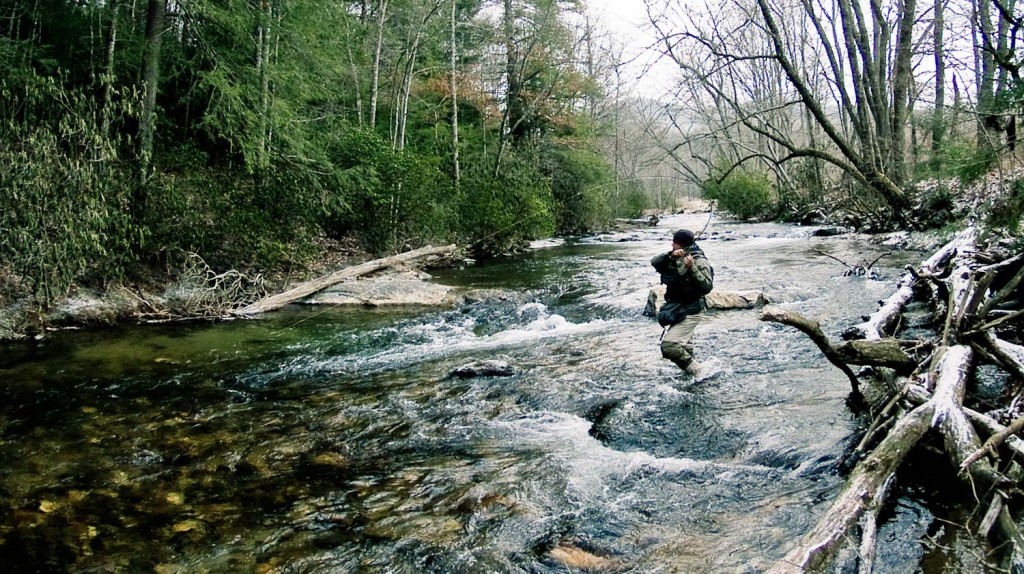
Anytime I come across any sort of wood on the water trout fishing, I always take the time to fish around it.
Whether it’s a log jam, isolated root ball, or low overhanging tree, wood offers trout cover and safety which are two very important elements that trout look for when they’re deciding where to position themselves in a river or stream. Wood also in many cases offers current breaks, eddies, and soft seams, that allow trout to feed easily and safely out of the calorie burning swift current. Furthermore, there’s an incredible amount of food that falls off wood cover and hangs out amongst wood, that very often ends up in the stomachs of trout. All of the above make wood prime habitat for trout.
Did I mention that brown trout love to hangout around wood? I can’t tell you how many times I’ve caught nice brown trout around wood, especially when
Read More »Friends Don’t Let Friends Fish Muds
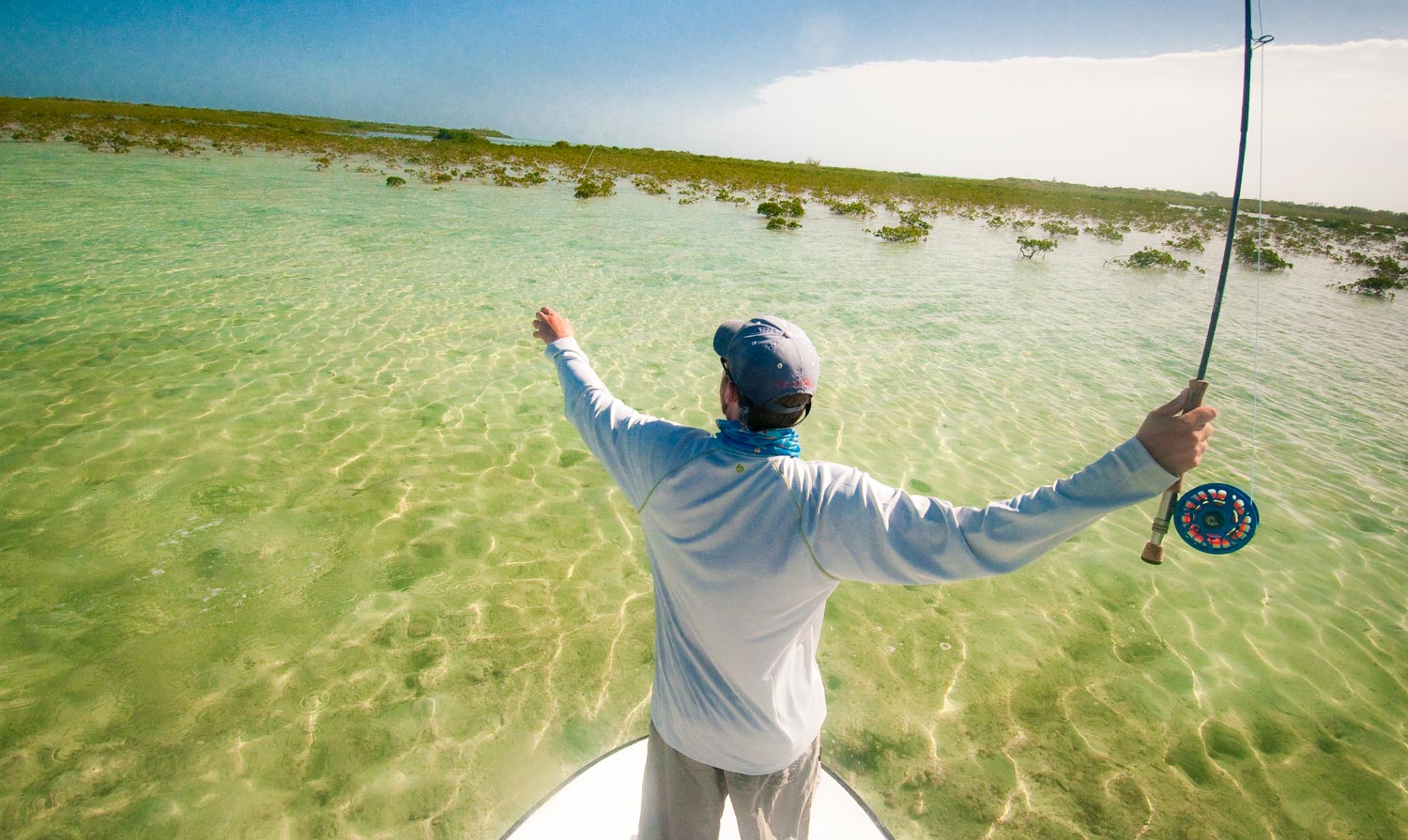
“THIS IS THE KIND OF BONEFISHING THAT RUINS YOU. THE KIND OF FISHING THAT IMPAIRS YOUR ABILITY TO MAKE GOOD DECISIONS.”
The sky is a perfect robin’s egg blue. Reflections of the morning sun dance on the underside on the mangroves giving the bright green leaves an unnatural glow. A breath of breeze cools my face in contrast to the warm sun on my back. Sixty or seventy yards in front of the boat there is a small school of nice size bonefish moving our way along the edge of the mangroves. It is a perfect morning on South Andros.
This flat is called Dodum. Dodum flat is a large white sand flat adjacent to the ocean at the mouth of Dodum Creek. The sand of the flat is as perfect as fresh snow and the water is a uniform depth of one to four feet depending on the tide. With the tide out, it’s a great wade and with it in, you can spend a whole day poling a boat around it. Dodum is big. Picture a Wal-Mart. Now picture the piece of land a Wal-Mart sits on, parking lot and loading docks included. Dodum is five times that size.
The tide is just beginning to fall and Captain Freddy is poling Kent and me along the mangroves at the edge of the flat. We are picking up fish as they come out of the mangroves with the tide. They are nice fish, averaging five or six pounds and there are plenty of them. We’re putting good numbers on the board early.
This is Kent’s first trip to South Andros. It’s my favorite place in the world to fish and he’s listened to me go on about it for countless hours. It’s our third day of fishing and, though the fishing has been good, Kent has yet to have one of those South Andros ‘magic days’. Almost anyone who has fished this place knows what I’m talking about. When the stars line up, things happen on South Andros that make your friends call you a liar.
Though Kent and I fish together all the time and have made some truly epic trips together, it just hasn’t worked out for us to make this trip. I’ve lost count of the days I’ve spent on Andros, but for me this trip is special. This time I get to show my best fishing buddy my favorite water in the world. Any fish I catch is a surplus to my excitement. Watching Kent, a look of child-like wonder on his face, soak in the beauty of this place and feel the power of these fish, that’s what I’m here for.
“You picked a fine time to leave me Lucille,” Freddy bursts into song as
Read More »Streamer Fishing: Float Your Lane
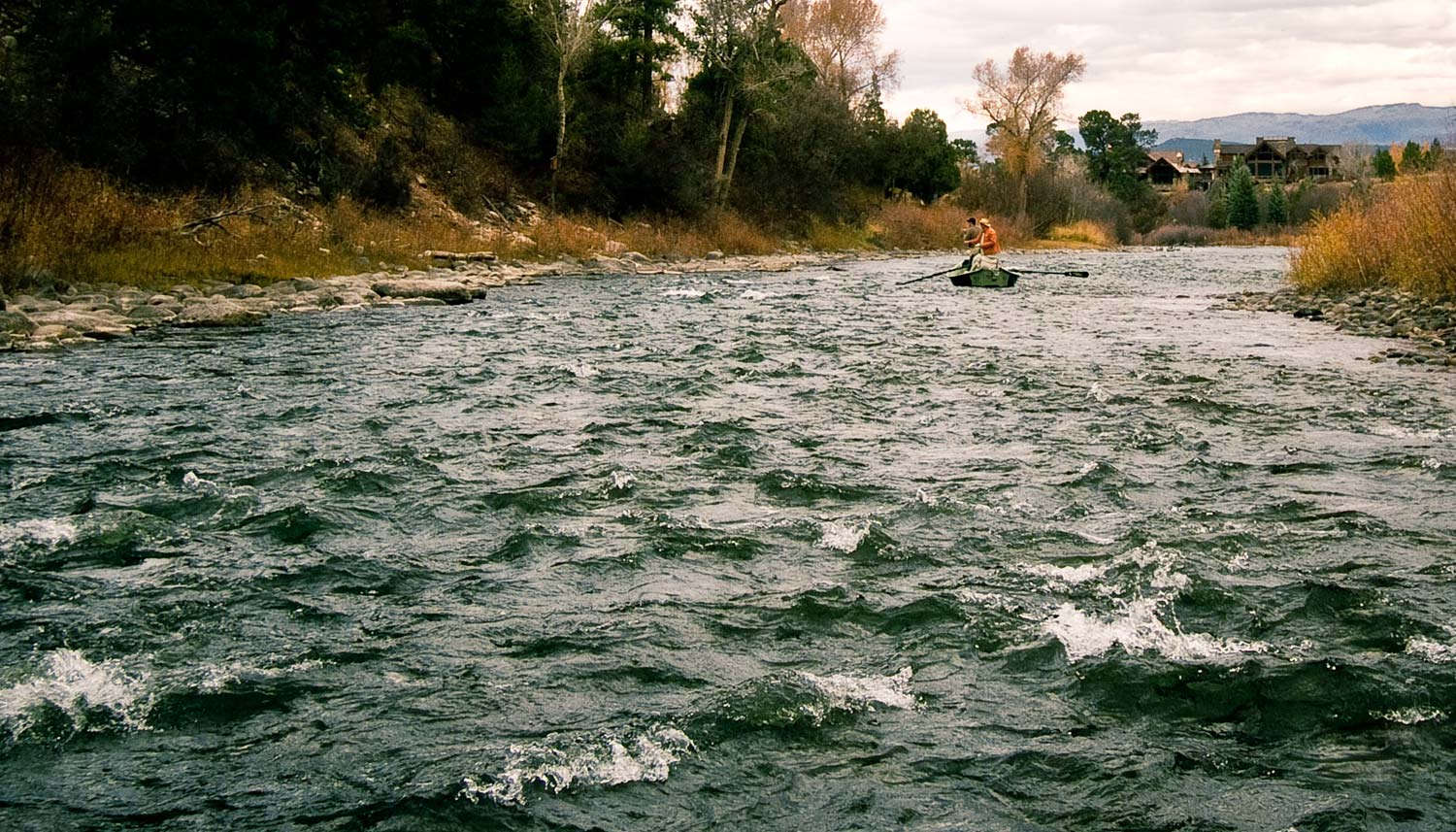
By Louis Cahill
When you are fishing streamers from a boat, how close should you be to the bank?
Ask a dozen anglers and you may get a dozen answers. The distance that works for me, might not work for you, but I’m going to share some thoughts that might help you decide for yourself where your lane is.
I’m just home from a great week of dorado fishing in Argentina. Dorado fishing is streamer fishing at it’s highest level and it’s incredibly challenging, both physically and mentally. It involves taking lots of long accurate casts. Well, that’s the conventional wisdom. I have my own thoughts about it and the group had some lively conversation on the topic. It really helped me focus in on what I think works. Not just for dorado, but for any streamer fishing.
The key to success is making good, accurate presentations to as many likely holding spots as possible. The more good presentations you make, the more likely you are to find that trophy fish who’s ready to eat. It’s a numbers game but with some qualifiers. They have to be good presentations and they have to be in the right spots. Most, but not all, of those spots are along the bank.
In general, when fishing streamers, you do not need to strip the fly all the way back to the boat. In fact, doing so is detrimental to your cause. There are of course some exceptions, but in those cases it’s worth asking if you are really fishing the bank. The structure of most trout rivers is such that the strike zone is in the first fifteen feet or so next to the bank. Once your fly is moving out of the holding water, it’s time to cast again.
What you want is to work that strike zone as efficiently as possible, hitting as many likely pockets as you can. That means dropping the fly against the bank, making six to ten strips, and hitting the next pocket. For every angler there is
Read More »4 Tips For High Water Trout Fishing
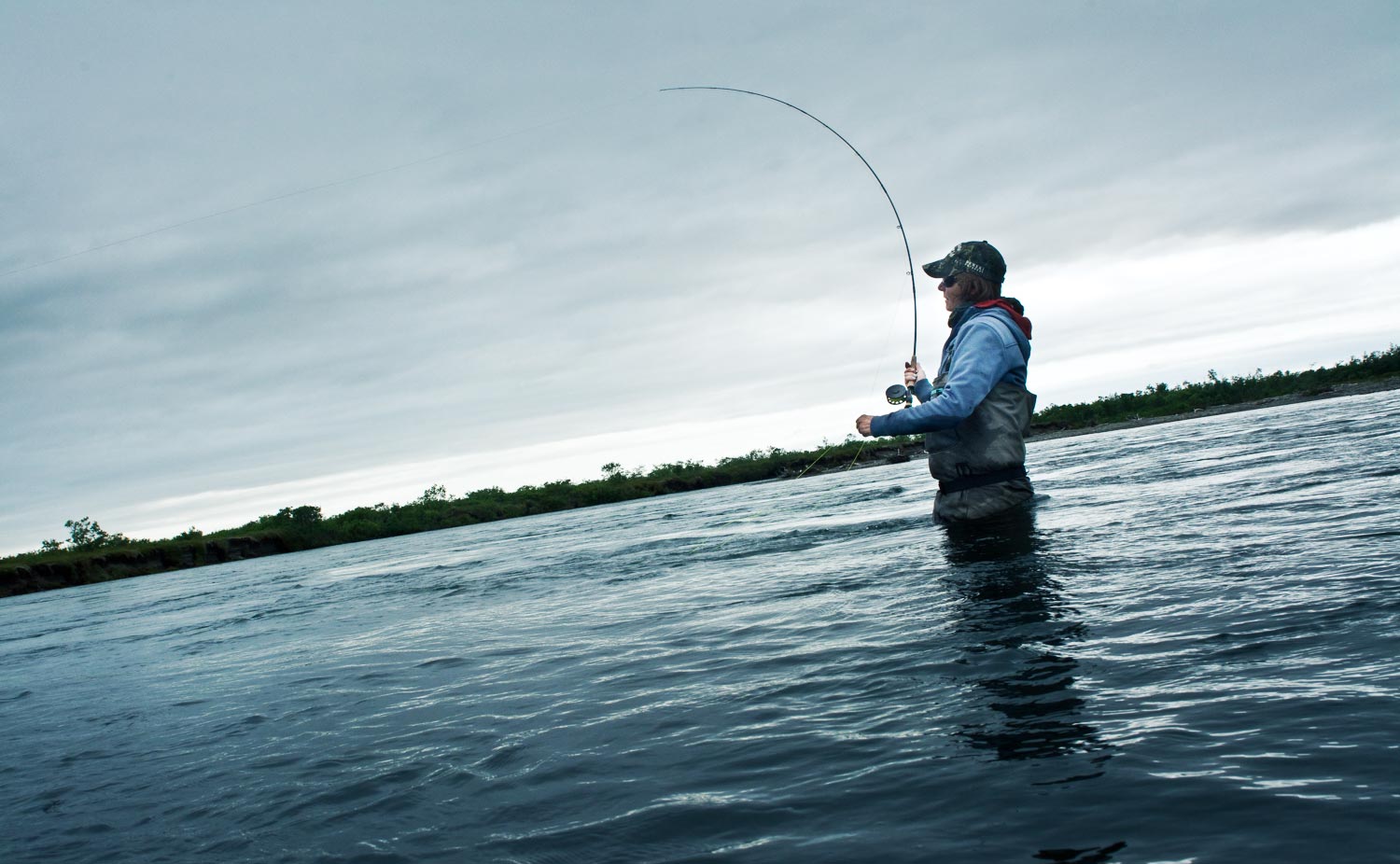
These tips will help you catch fish when the river is up.
Anglers in parts of the west are looking at high water for the foreseeable future. High water can be a fly anglers friend. A swollen river might spoil your dreams of big trout sipping mayflies in the film but if you adapt to the conditions you can still enjoy good fishing and the chance at a real trophy. Here are 4 tips to help you be successful during this season’s high water.
Head upstream
While the lower sections of larger rivers may be pretty stained, you can almost always find fishable conditions further upstream. If visibility is too poor on your larger rivers, it might be time do do some blue lining and check out those headwater streams where conditions are better.
Look for points of refuge
High water forces fish to stack up in places where the current is not so strong. Eddies and inside bends where the water is slower can be very productive. You can sometimes catch a handful of fish out of small pockets you’d walk past at normal flows. Structure becomes even more important in heavy water. Pay extra attention to blowdowns and submerged boulders.
Match the hatch that isn’t
Read More »Fight Big Fish with the Butt Section of the Fly Rod Not the Tip

If you fly fish long enough and pay your dues, it’s just a matter of time until you hook into a giant fish and experience defeat.
I’ve always loved the saying, “It’s always the big ones that get away”, like it provides anglers a viable excuse for losing battles with big fish. I’ll admit there are times when we’re at complete mercy of big fish, and defeat is 99% inevitable, but most battles are lost due to angler error, specifically by fighting big fish incorrectly with the fly rod.
For many anglers, every time they lose a big fish, a portion of their fish-fighting confidence disappears with it, and they become more paranoid with each unsuccessful encounter. Overtime, this paranoia and lack of confidence distorts their fish fighting instincts, and they begin to play big fish too conservatively, thinking if they put more pressure on the fish, the tippet will break or the hook will pull free. What they end up doing most of the time is fighting the fish with their rod tip instead of fighting the fish with the mid-section and butt section of the rod. This seriously limits an anglers ability to apply power and steer the fish during a fight, because all the power comes from the butt and mid-section of the rod, not the tip. It also will keep the leverage in the fish’s court, which will take it far longer for you to tire out a big fish. Fight times can be doubled, sometimes even tripled, and that’s bad news for a trophy specimen if the battle is taking place during the year when oxygen levels are low (you can play a fish to death). Furthermore, the longer the fight is prolonged, the better the chance something could go wrong, resulting in a fish being lost during the fight (teeth wearing through tippet, fish raking you across rocks and breaking line, fish snapping you off in a snag, ect).
Fight a big fish the right way
First, set your drag precisely before you wet a line. Doing so, you’ll be confident if you begin applying too much pressure on a big fish, your reel will smoothly let out fly line. Second, when applying side pressure (to flex the mid and butt sections
12 Tips For Hike-In Fly-Fishing
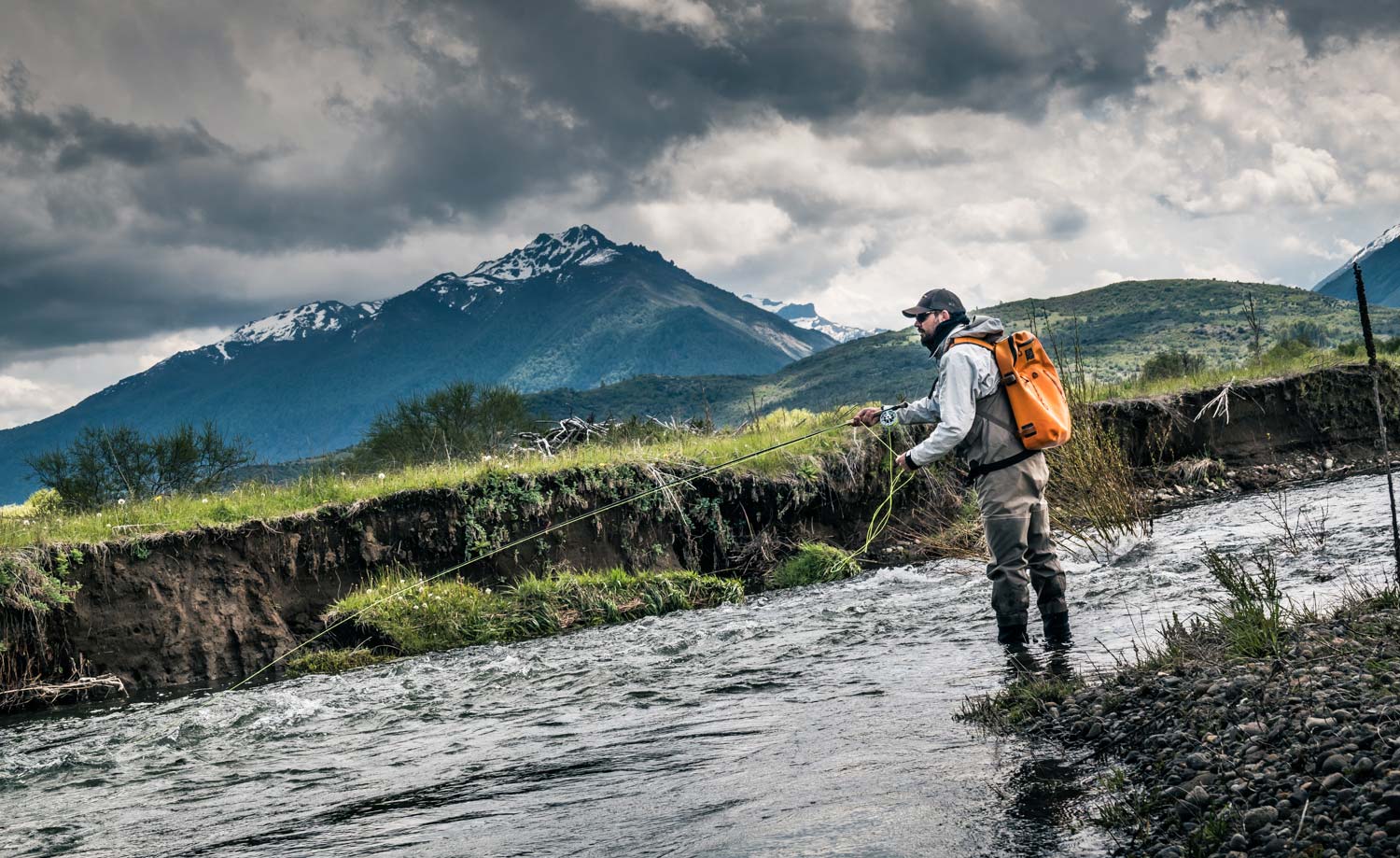
By Louis Cahill
Every angler knows that the further you walk, the better the fishing.
Keep that in mind when I tell you, I recently had some of the best trout fishing of my life in the Andes mountains of Patagonia. That should give you some idea how much we walked. The rewards where big. The rivers we fished were pristine and without a trace of humans, the views and wildlife were stellar and the trout were big and plentiful. That’s worth the walk seven days a week.
I did have to spend some time thinking through my gear and necessities for the trip. Hike in fishing requires a little more preparation, even when you are just day-hiking. Simple stuff you might run back to the truck for can turn into a big deal miles up the trail. Most of this is common sense but I will try to be thorough for the uninitiated.
Here are 12 tips for a day of hike-in fly-fishing.
Boots, Wading vs. Hiking
I’ve broken both my feet several times. Good boots are important to me. I want something that gets good traction, gives me good arch support and good ankle support. Most wading boots make poor hiking boots so, given the choice, I’ll hike in hiking boots and change to wading boots. Sometimes the hiking takes you through the river and then, wading boots are the ticket. It helps to know the trail you’ll be taking.
Whether I’m hiking in them or not, my first choice is the Simms Intruder boots. They are actually pretty good for hiking and they are very lightweight, which is nice if you’re carrying them. A good trick is to carry a plastic bag and stash your hiking boots somewhere out of sight and safe from rain in their bag, while you’re fishing.
Camping towel and dry socks
If you are changing boots, a lightweight camp towel and a fresh pair of dry socks are really nice to have. Even if you are fishing in waders you can end up with wet socks that might cause blisters.
Day pack
A good waterproof backpack is a must have. I use the Fishpond roll top, but the new model with the T-Zip is a nice upgrade. In addition to keeping your gear dry and together, I have used these packs as flotation devices for sketchy river crossings.
Extra pockets
Pockets for frequently used gear let me fish from my backpack, without carrying a fishing pack too. It’s a good idea to pair down your gear to just the essentials. Extra gear is just extra weight to carry. The hiker’s saying, “Ounces make pounds and pounds make pain,” is true.
Rod in the sock
It’s a pain hiking with your rod put together and a tube is just extra weight. A rod sock is usually all you need to keep your rod safe. If I feel like I’m going to need more protection, I have a couple of carbon fiber rod tubes I’ll use for their light weight.
Filter bottle
A good filter bottle is absolutely necessary. Hydration is super important, but carrying water is crazy. Carry an empty bottle and drink from the river. The Katadyn Be Free is the best I’ve used. It weighs nothing and fits in a pocket.
Read More »10 Yellow Sally Fly Patterns That I Love
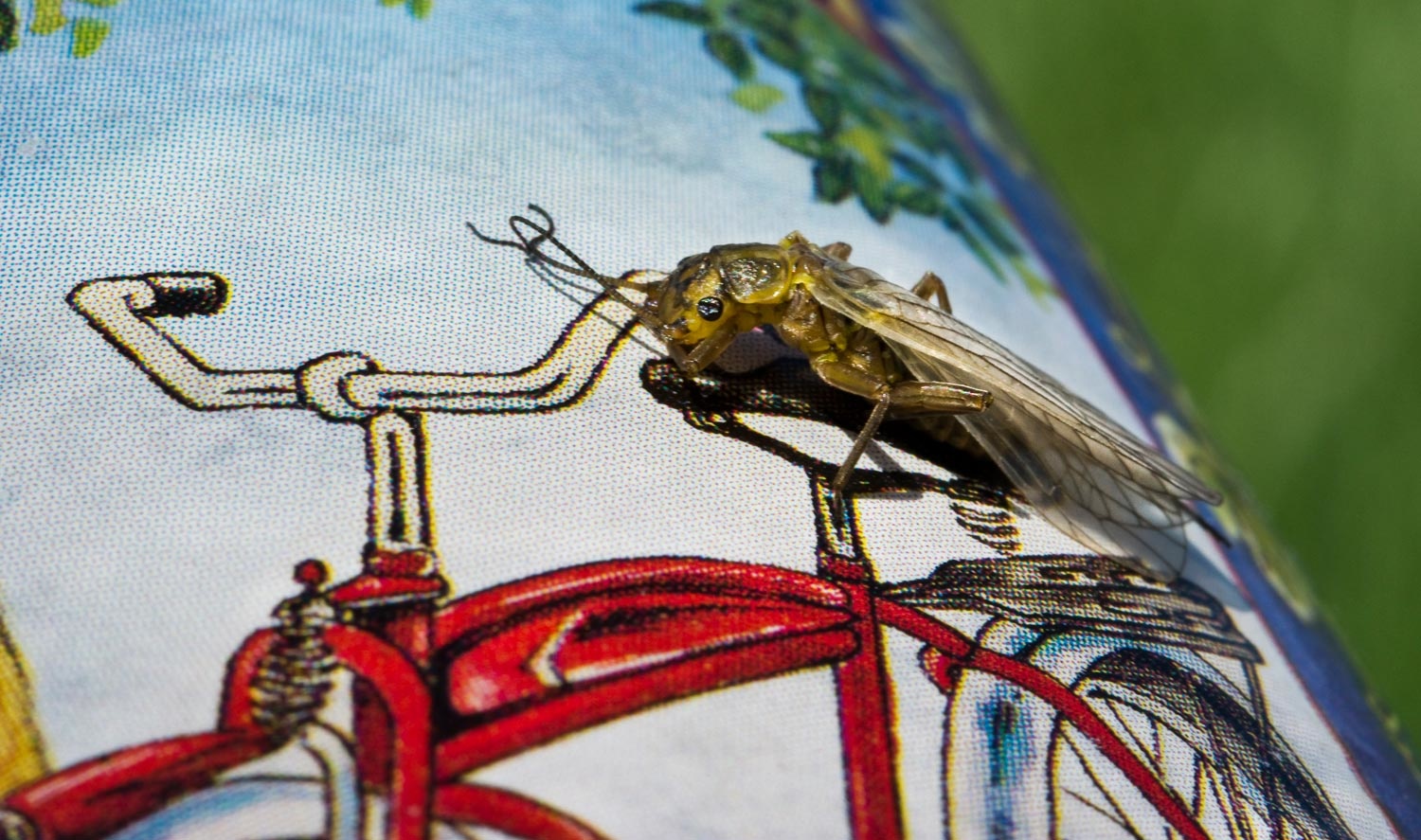
When I think back on all the times I’ve fished Yellow Sally stonefly hatches over the years, I honestly can’t remember ever having a bad fishing experience.
If I can find them on the water, I usually have no problem getting trout to take my imitations. Yellow Sally stoneflies hatch from coast to coast. Depending on where you live, they usually show up the month of May and in some areas will stick around until the end of August. You’ve got to love an aquatic insect that has a hatch period that lasts not weeks, but months. Even in the dead of terrestrial season, or when other aquatic bug hatches such as caddis or mayflies are in progress, trout will regularly forage on Yellow Sallies if they’re available. For that fact alone, fly anglers should always have a handful of Yellow Sally fly patterns stowed away in the fly box at all times. Trout love them and so should you.
With the gargantuan number of fly patterns out there these days, it can be a challenge at times to pick out the real rock stars amongst all the other players in the fly bins. Below are ten Yellow Sally patterns that I’ve personally fished and had great success with. Four are nymphs and six are dries. My hopes for this post is simply to help point fly anglers in the right direction whether it’s at the vise or at a local fly shop for stocking up on proven Yellow Sally stonefly patterns.
Read More »Fly Fishing Fast Water Chutes for Trout
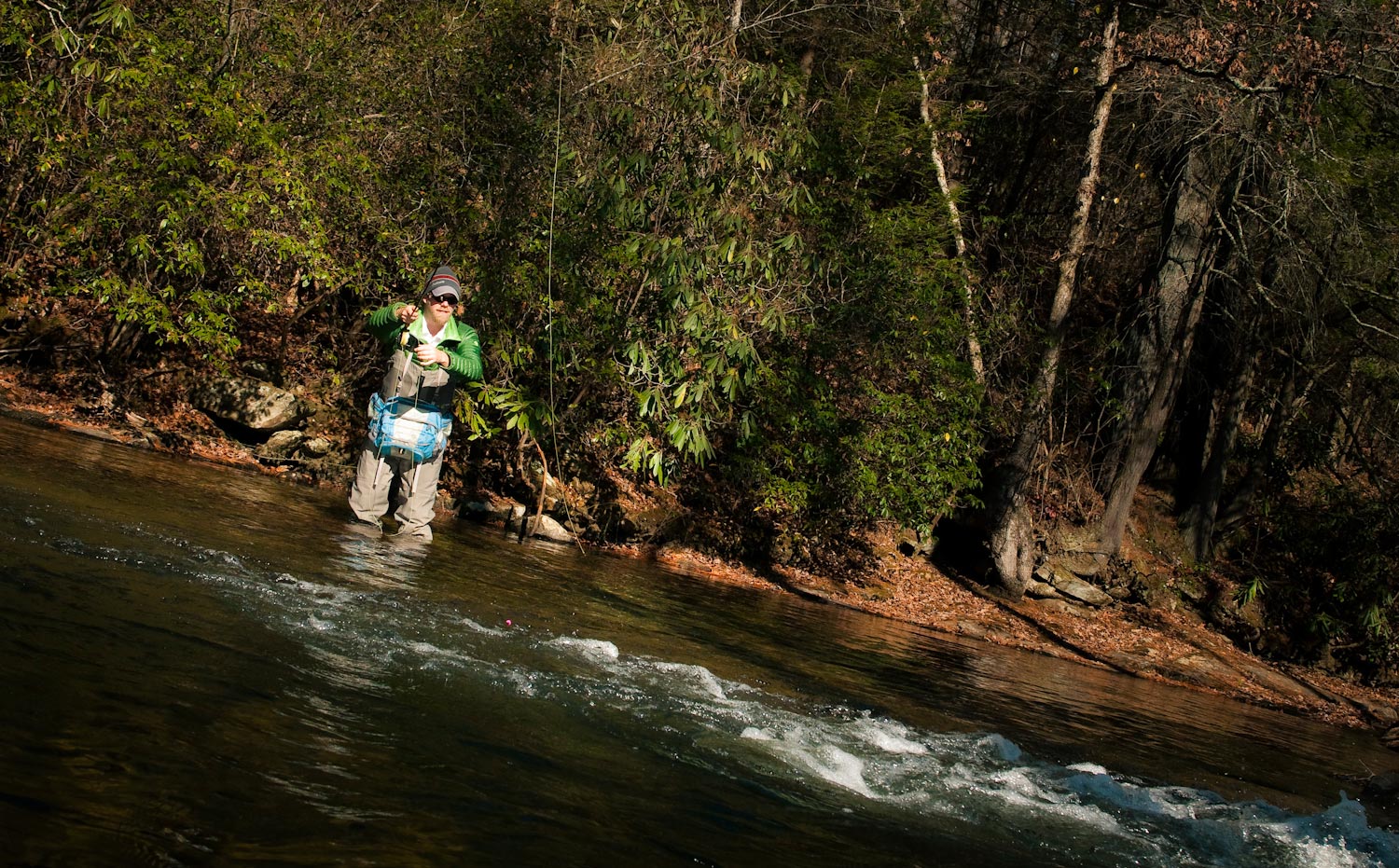
WHY TROUT LOVE FAST WATER CHUTES
Fast water chutes are great habitat for trout to set up residence around. Most of them provide everything a trout needs to survive, and fly fisherman should take the time to fish them because they almost always hold fish. Fast water chutes provide overhead cover that trout can quickly utilize by swimming into the chute if they feel threatened. The well defined current from the chute also acts as a food conveyor belt, supplying trout with a constant trickle of food 24/7. Furthermore, the turbulent waters created by chutes increase oxygen levels in the surrounding waters, and this is an added bonus and reason for trout to set up shop in and around chutes in streams and rivers. Lastly, chutes generally offer feeding lanes on each side that trout can take advantage of to feed effortlessly. These are the edges of the chute, where the fast and slow water come together and meet. Trout often gravitate towards the edges because it requires less energy to hold there, it’s very close to the conveyor belt of food and extremely close to their fast water overhead cover. Focus on drifting your flies along the edges of the chute first. After you’ve fish the edges, then work your flies through the main current of the chute.
There are multiple ways for anglers to fly fish fast water chutes, but most of the time, I find it most effective to wade to the sides of the chutes, and fly fish perpendicular to them. Doing so, it gives me better control of my drifting flies and improves my line management. Positioning to the side of a chute also improves my stealth, because I’m able to present my flies in front of the trout with just my leader, keeping my fly line out of sight. It also allows me to work with the current when drifting my flies, instead of fighting against it.
Check out the video below that demonstrates how I prefer to fish fast water chutes.
Read More »